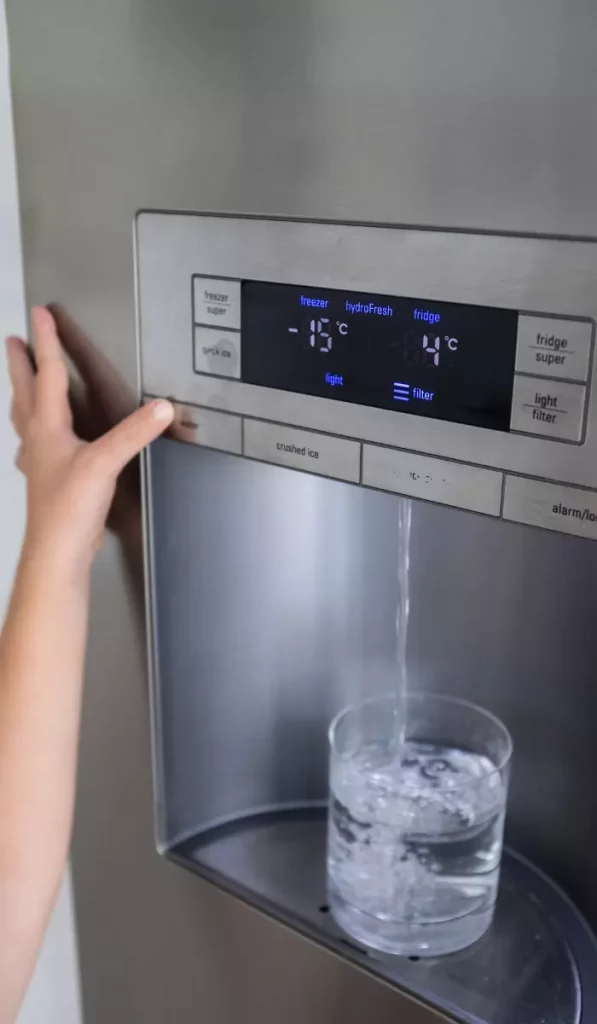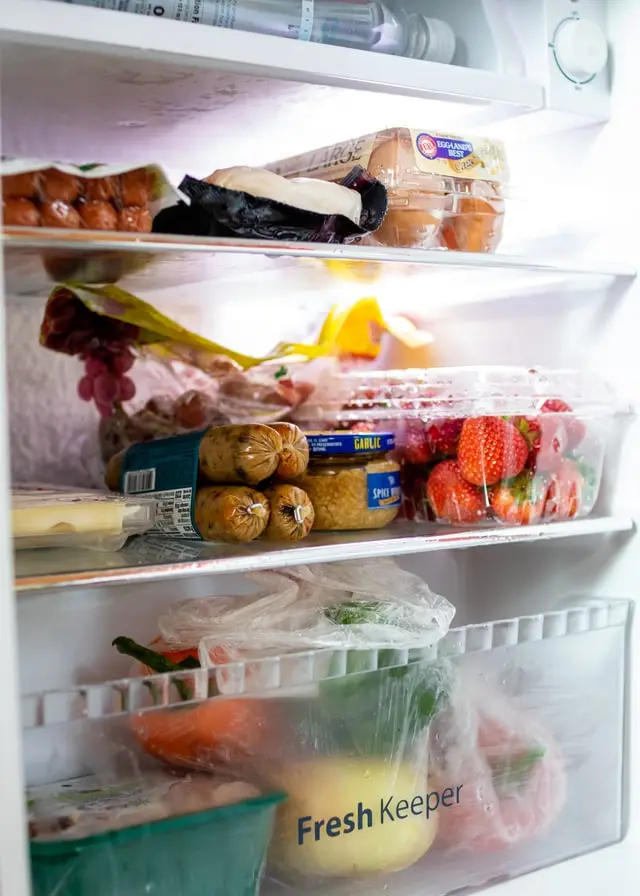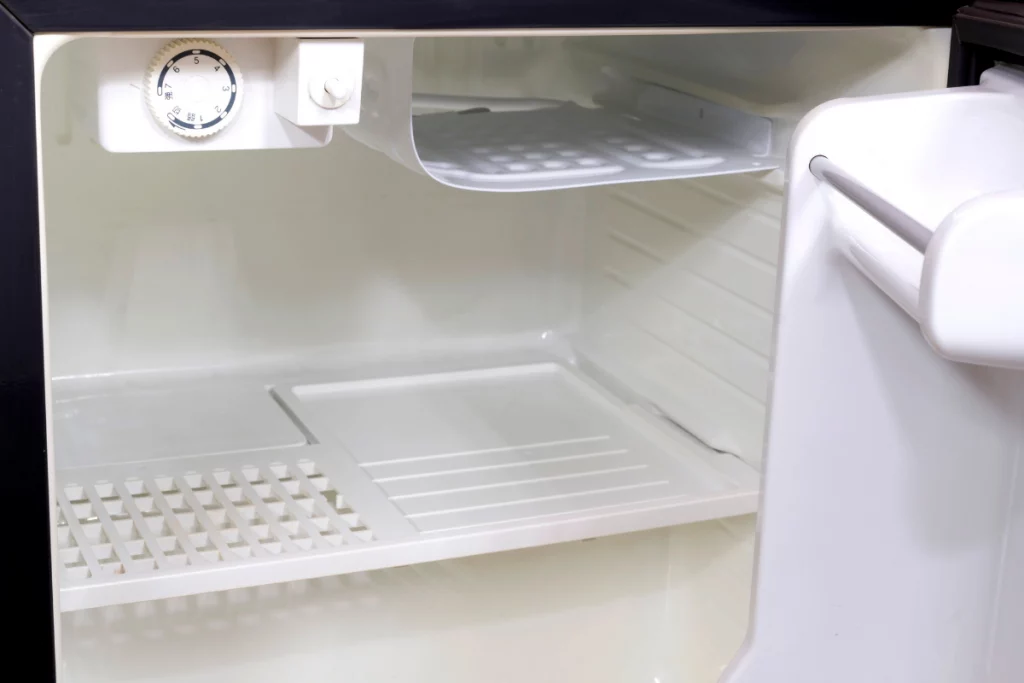We’ve all had those moments – unplugging an appliance to clean behind it, move it, or simply because we’re going on vacation. But what if, when you plug your refrigerator back in, it simply doesn’t power up? It’s a situation that can send anyone into a mild panic, considering the importance of a fridge in daily life and the potential for spoiled food.
If you’ve found yourself exclaiming, “I unplugged my fridge and now it won’t work!” – read on for some helpful insights.

Table of Contents
Possible Reasons Your Fridge Isn’t Powering Up
Let’s dive into some reasons why your trusty fridge might be giving you the silent treatment:
- Tripped Circuit Breaker: Sometimes, when appliances are unplugged and then re-plugged, it can cause a surge which trips the circuit breaker. It’s a little like the house’s way of saying, “Whoa there, slow down!” Before diving into other solutions, check your breaker box to see if the switch related to your fridge’s outlet has been tripped.
- Faulty Outlet: Believe it or not, sometimes the culprit isn’t the fridge itself but the wall socket. Plug in another small appliance, like a lamp or a phone charger, to see if it gets power. If not, you might be dealing with a faulty outlet.
- Power Cord Issues: Give that power cord a good look-see. If it’s damaged or frayed in any way, it could be the reason your fridge isn’t powering up. If you do spot damage, it’s best to consult with a technician; DIY electrical repairs can be risky business!
- Internal Safety Switch: Some modern fridges come with safety switches that prevent them from turning on immediately after being plugged in, avoiding potential harm to the compressor. If you’ve only just plugged your fridge back in, give it a little time. It might just be doing its thing and taking a safety-first approach!
- Compressor or Relay Issues: The compressor is like the heart of your fridge. If it has issues, your fridge might not start. The relay, on the other hand, acts as a starter for the compressor. Problems with either of these components might be why your fridge isn’t saying hello when plugged in.
- Old Age: Let’s face it, nothing lasts forever. If you’ve had your refrigerator for many years and it’s had a good run, it might just be its time. But don’t rush to this conclusion; it’s often one of the last considerations after ruling out other factors.
These are just a few potential reasons, and while it’s tempting to play the detective, it’s always a good idea to consult with a professional if you’re unsure. Remember, while a DIY fix sounds adventurous, refrigerators are complex machines, and there’s no shame in calling in the experts!
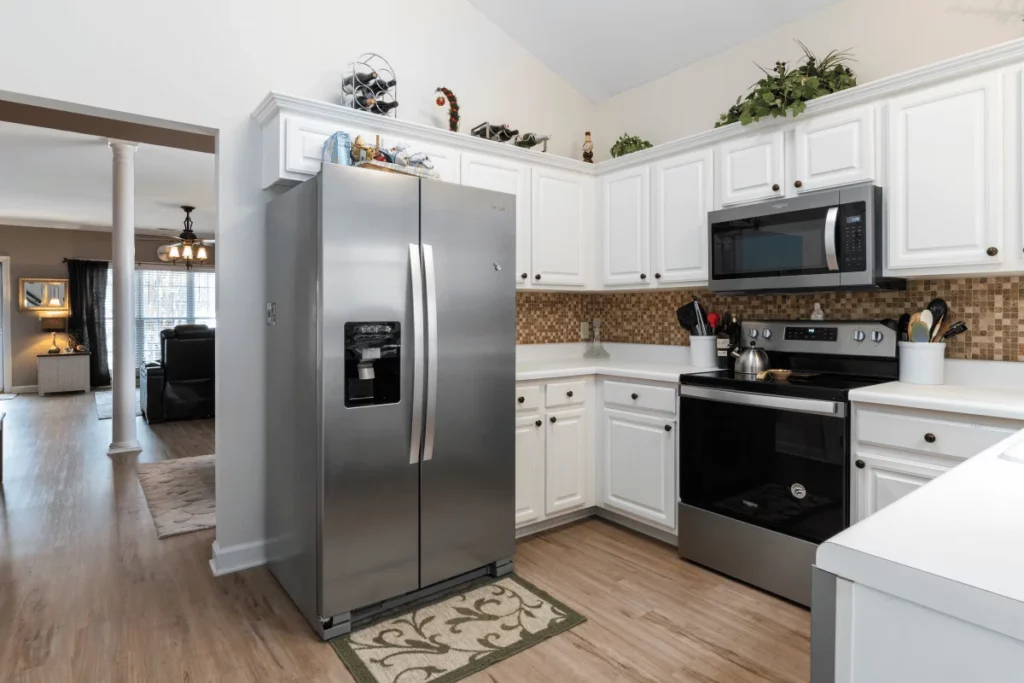
How Long Does It Take for a Fridge to Work After Being Unplugged?
Alright, so you’ve plugged it back in and there’s a sigh of relief as you hear the familiar hum. But wait a minute, it doesn’t feel cold right away! Before you go into another round of panic, let’s break down the deets.
- Initial Cooling Period: Typically, after you plug it back in, a fridge will take anywhere from 12 to 24 hours to cool down to the optimal temperature . Yep, just like you might need some time to chill after a long day, so does your fridge.
- Full of Food? Patience is Key: If your refrigerator was already packed with food when you plugged it back in, it might take a bit longer. Food items, especially if they’ve warmed up, need time to cool down. We’re talking anywhere from 10 to 12 hours for the fridge to reach its optimal temperature.
- Freezer Factors: The freezer compartment tends to chill faster, but for it to be ready to safely store foods like meats, you’re looking at about half a day.
- External Elements: Factors like room temperature, how often the fridge or freezer door is opened, and even the model of the fridge can influence how quickly it cools. If it’s a blazing summer day, it might take a tad longer than on a cooler day.
- Safety First: If you unplugged the fridge because you were going away and now you’re back to a fridge full of food, be careful. If perishable items like milk, meat, or eggs have been at room temperature for too long, it’s safer to toss them out. Trust your senses: if it smells funky or looks off, it probably is.
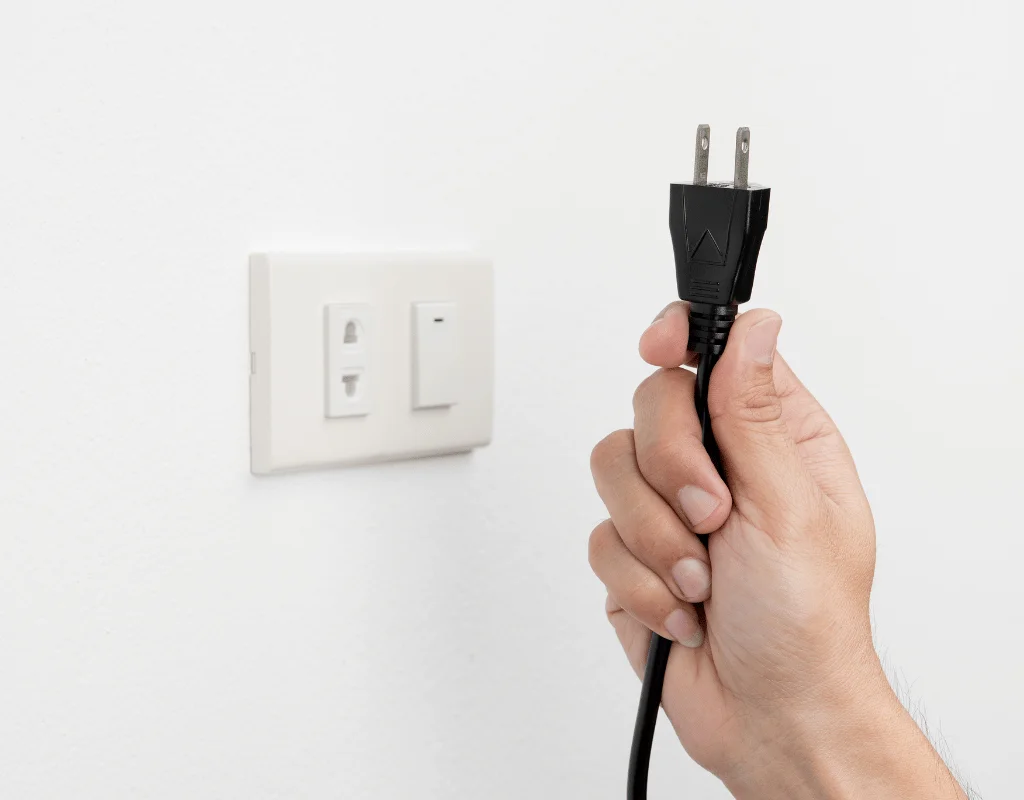
What Happens if a Refrigerator is Switched Off for a Long Time?
So, maybe you went on that dreamy, extended vacation (lucky you!), or perhaps you’ve been renovating and had to switch off the fridge for a while. But what happens to our cool companion when it’s off for an extended period? Let’s dish out some info:
1. Odor Build-Up
First off, an idle fridge can become the perfect environment for mold and mildew, leading to unpleasant smells. This happens because, in a closed, dark environment without the drying effect of the cooling process, moisture can accumulate.
2. Stiff Components
Just like we can feel a bit stiff after lazing on the couch all day, some of the mechanical parts of your fridge can also seize or become less responsive after not being used for a while.
3. Possible Pest Invasions
Yes, I know, yuck! But it’s possible. Tiny pests can find their way into an unused fridge if there are any food residues. Hence, it’s always a smart move to clean it out thoroughly before shutting it down for a while.
4. Increased Moisture
When not in use, especially during more humid times of the year, a fridge can accumulate moisture. This can lead to rust or even short circuits when powered up again. It’s always a good idea to leave the doors slightly open if you plan to switch it off for an extended period. This allows for airflow, preventing moisture build-up.
5. Refrigerant Settling
Fridges use a refrigerant to cool down, and long periods of inactivity can cause this refrigerant to settle. While it’s not a major issue, it might take a bit longer for your fridge to cool down optimally once it’s turned on again.
So, before you decide to give your fridge an extended vacation, consider these factors. A little prep can make the transition much smoother when you’re ready to bring your fridge back to life. And hey, if you ever felt bad about not giving your fridge a break, don’t. It really does prefer to stay cold and busy!

How Do I Get My Fridge to Work Again?
Finding yourself with a non-responsive refrigerator can be a bit like trying to wake up a teenager on a weekend morning. But fret not, because just like with that sleepy teen, there are a few nudges you can give to get things moving:
- The Old Unplug and Replug Trick: Sometimes, the simplest solutions are the most effective. Unplug your fridge, wait for a few minutes, and then plug it back in. It’s like giving it a mini reboot.
- Check the Basics: As mentioned earlier, ensure that the wall outlet is working, the circuit breaker hasn’t tripped, and the power cord is in good shape. Sometimes, the issue might be right in front of us!
- Clean the Coils: Over time, the condenser coils at the back or bottom of your fridge can collect dust and debris. This can impact the fridge’s efficiency. Giving them a gentle clean with a brush or a vacuum can sometimes make a world of difference.
- Listen Closely: Put your ear near the refrigerator. Do you hear a faint humming? If yes, that’s a good sign as it might just be an issue with the cooling system and not the power. If no, the problem might be with the motor or compressor.
- Adjust the Thermostat: Sometimes, the thermostat dial might get accidentally nudged to the off position. Ensure it’s set at the right temperature.
- Inspect the Door Seal: If the door seal is damaged or dirty, it can prevent the fridge from cooling effectively. Give it a quick clean, and if it’s damaged, you might consider replacing it.
- Call in the Experts: If all else fails, it’s time to get someone who speaks fluent “fridge” to take a look. A technician or appliance expert can offer insights into whether it’s a simple fix or something more complex.
And remember, it’s okay if you can’t figure out the issue on your own. Fridges can be mysterious creatures at times, and there’s no harm in seeking a little expert advice to get your cold companion back on its feet.
Conclusion
Unplugging and replugging a fridge might seem straightforward, but as we’ve seen, it can come with a few hitches. If your fridge throws a curveball your way, remember this guide. Sometimes it’s a simple fix, other times it might need a professional touch. At the end of the day, our refrigerators are invaluable household buddies, and with a bit of care and attention, they’ll be back to their cool selves in no time. Here’s to hassle-free appliance adventures!

